In today’s rapidly evolving technological landscape, the integration of artificial intelligence (AI) into various sectors has become ubiquitous. From healthcare and finance to marketing and customer service, AI is revolutionizing how organizations operate, enhancing operational efficiency, and driving innovation. However, this integration brings with it a myriad of regulatory challenges that organizations must navigate to ensure ethical, legal, and responsible AI use.
Mastering AI regulatory compliance is crucial for organizations to mitigate risks, build trust, and harness the full potential of AI. Regulatory bodies around the world are increasingly scrutinizing AI technologies to ensure they adhere to established legal and ethical standards. Non-compliance with regulatory obligations can lead to severe penalties, reputational damage, and loss of consumer trust. Therefore, organizations must prioritize regulatory compliance to not only avoid legal pitfalls but also to demonstrate their commitment to responsible AI practices.
Understanding AI and Regulatory Compliance
Definition and Scope
AI regulatory compliance refers to the adherence to laws, regulations, and ethical standards governing the use of AI technologies. This compliance ensures that AI systems are used responsibly, ethically, and legally. It encompasses various aspects such as data privacy, transparency, fairness, and accountability, which are essential for fostering trust and preventing misuse of AI.
- Data Privacy: Ensuring that personal data used by AI systems is collected, stored, and processed in a manner that protects individual privacy rights.
- Transparency: Making AI decision-making processes understandable and accessible to users and stakeholders.
- Fairness: Preventing biases in AI algorithms to ensure equitable treatment of all individuals.
- Accountability: Establishing clear roles and responsibilities for the governance and oversight of AI systems.
These elements are integral to creating a regulatory framework that supports the ethical deployment risk management of AI technologies.
Regulatory Landscape
The regulatory landscape for AI is complex and continuously evolving. Key regulations include:
- General Data Protection Regulation (GDPR): Enforces data protection and privacy for individuals within the European Union. GDPR requires organizations to implement stringent data protection measures and provides individuals with rights over their personal data, such as the right to access, rectify, and erase their data.
- California Consumer Privacy Act (CCPA): Provides data privacy rights to California residents. The CCPA mandates that organizations disclose the types of personal data they collect, how it is used, and with whom it is shared. It also grants consumers the right to opt-out of the sale of their personal information.
- Health Insurance Portability and Accountability Act (HIPAA): Protects sensitive patient information in the healthcare sector. HIPAA sets national standards for the protection of health information, requiring healthcare providers and their partners to ensure the confidentiality, integrity, and availability of electronic health records.
- Industry-specific regulations: Various industries have their own regulations to ensure the responsible use of AI. For example, the Financial Industry Regulatory Authority (FINRA) oversees AI use in financial services to prevent market manipulation and ensure fair trading practices.
These regulations have significant implications for AI deployment, requiring organizations to implement robust compliance strategies. Failure to comply with these regulations can result in substantial fines, legal action, and damage to an organization’s reputation. Therefore, understanding and adhering to the regulatory landscape is essential for any organization deploying AI technologies.
Key Components of AI Regulatory Compliance
Data Governance
Establishing robust, data management and governance frameworks is fundamental to AI regulatory compliance. This involves ensuring that data is collected, stored, and processed in accordance with data protection regulations. Ethical AI principles, such as data minimization and user consent, must be embedded into the data governance practices to protect individual privacy and rights.
- Data Minimization: Collecting only the data that is strictly necessary for the AI system’s purpose, thereby reducing the risk of data breaches and misuse.
- User Consent: Obtaining explicit consent from users before collecting and using their data. This not only ensures compliance with regulations but also enhances transparency and trust.
- Data Quality: Ensuring that the data used in AI systems is accurate, complete, and up-to-date. High-quality data is essential for reliable AI outputs and for meeting compliance standards.
- Data Security: Implementing strong security measures to protect data from unauthorized access, breaches, and cyberattacks. This includes encryption, access controls, and regular security audits.
By integrating these practices, organizations can build a solid foundation for compliant and ethical AI deployment.
Transparency and Explainability
Implementing mechanisms to enhance transparency and explainability in AI systems is crucial for meeting regulatory requirements and building trust. Organizations must ensure that AI decision-making processes are understandable and interpretable by stakeholders, including regulators and end-users.
- Algorithm Transparency: Making the workings of AI algorithms accessible and understandable to non-technical stakeholders. This involves documenting how algorithms are designed, trained, and how they function.
- Decision Traceability: Ensuring that AI decisions can be traced back to specific data inputs and processing steps. This helps in auditing and explaining decisions when required.
- User-friendly Explanations: Providing clear and concise explanations of AI decisions to users, especially in cases where decisions have significant impacts on individuals’ lives, such as in healthcare or finance.
- Regulatory Reporting: Maintaining detailed records and documentation of AI processes and decisions to demonstrate compliance during regulatory audits.
Enhancing transparency and explainability not only helps in regulatory compliance but also builds user confidence and trust in AI systems.
Bias and Fairness
Addressing bias and fairness concerns in AI algorithms is essential for compliance with anti-discrimination laws. Organizations must proactively identify and mitigate biases in their AI systems to ensure equitable outcomes and prevent discrimination against any group.
- Bias Detection: Regularly testing AI systems for biases during development and deployment phases. This involves using diverse and representative datasets to train AI models.
- Fairness Audits: Conducting independent audits to assess and ensure fairness in AI systems. These audits can help identify and rectify unintended biases.
- Inclusive Design: Engaging diverse teams in the AI development process to ensure that different perspectives are considered, thereby reducing the risk of biased outcomes.
- Continuous Monitoring: Implementing ongoing monitoring mechanisms to detect and address biases as they arise, ensuring that AI systems remain fair over time.
By addressing bias and fairness, organizations can ensure that their AI systems provide equitable and non-discriminatory outcomes, fostering trust and compliance with regulations.
Accountability and Responsibility
Defining clear roles and responsibilities for AI governance and accountability is critical. Organizations need to establish frameworks that hold individuals, business leaders, and teams accountable for ensuring compliance with regulatory requirements, thereby fostering a culture of responsibility.
- Governance Structures: Establishing governance bodies or committees dedicated to overseeing AI compliance and ethics. These bodies should have the authority to enforce compliance and address ethical concerns.
- Role Definitions: Clearly defining the roles and responsibilities of individuals involved in the AI lifecycle, from data scientists and developers to compliance officers and executives.
- Training and Awareness: Providing regular training on AI ethics, compliance, and regulatory requirements to all relevant stakeholders. This ensures that everyone understands their responsibilities and the importance of compliance.
- Accountability Mechanisms: Implementing mechanisms to hold individuals and teams accountable for compliance. This includes setting up reporting channels for ethical concerns and enforcing consequences for non-compliance.
Creating a culture of accountability and responsibility helps ensure that AI systems are developed and deployed in a compliant, ethical, and responsible manner.
Best Practices for Mastering AI Regulatory Compliance
Risk Assessment
Conducting thorough risk assessments is vital for identifying potential regulatory risks associated with AI initiatives. These assessments help prioritize mitigation efforts across regulatory environment and ensure that compliance risks are addressed proactively.
- Identify Risks: Catalog all potential regulatory risks that could arise from the use of AI, including data breaches, biased outcomes, and non-compliance with industry-specific regulations.
- Risk Evaluation: Assess the likelihood and impact of each identified risk. This evaluation helps prioritize which risks require immediate attention and resources.
- Mitigation Strategies: Develop and implement strategies to mitigate the identified risks. This may involve adopting new technologies, revising data handling practices, or enhancing security protocols.
- Documentation: Maintain detailed records of risk assessments and mitigation efforts to demonstrate proactive compliance measures to regulators.
Compliance by Design
Integrating compliance considerations into the design and development of AI systems from the outset helps minimize compliance risks. This approach ensures that AI systems are built with regulatory requirements in mind, making the compliance program a fundamental aspect of AI development.
- Regulatory Requirements Integration: Incorporate regulatory requirements into the AI development lifecycle, from initial design to deployment. This ensures that compliance is considered at every stage.
- Cross-Functional Collaboration: Engage cross-functional teams, including legal, compliance, and technical experts, in the AI development process to ensure comprehensive compliance coverage.
- Compliance Checkpoints: Establish compliance checkpoints at key stages of AI development to review and ensure adherence to regulatory requirements.
- Proactive Adjustments: Make necessary adjustments during the development process to address any emerging compliance concerns, preventing costly redesigns or penalties post-deployment.
Ethical AI Development
Incorporating ethical principles into AI design, development, and deployment processes is essential for mitigating ethical risks and ensuring compliance with regulations. Ethical AI development emphasizes transparency, fairness, and accountability.
- Ethical Frameworks: Develop and adopt ethical frameworks that guide AI development. These frameworks should include principles such as fairness, transparency, and accountability.
- Stakeholder Engagement: Engage with stakeholders, including end-users and impacted communities, to understand their concerns and incorporate their feedback into AI development.
- Ethical Audits: Conduct regular ethical audits to evaluate AI systems against established ethical principles and make necessary improvements.
- Ethical Training: Provide training on ethical AI practices to all team members involved in AI development, ensuring they understand and can apply ethical principles in their work.
Continuous Monitoring and Improvement
Implementing continuous monitoring and improvement processes with compliance professionals allows organizations to adapt to evolving regulatory requirements and address compliance gaps. Regular audits and updates ensure that AI systems remain compliant over time.
- Monitoring Systems: Establish systems to continuously monitor AI systems for compliance with regulatory requirements. This includes tracking data usage, algorithm performance, and decision-making processes.
- Regular Audits: Conduct regular audits to assess compliance with current regulations and identify any areas for improvement.
- Feedback Loops: Implement feedback loops to capture insights from audits and monitoring activities, using this information to improve AI systems and compliance processes.
- Regulatory Updates: Stay informed about changes in regulatory requirements and update AI systems and compliance practices accordingly.
Steps to Master AI Regulatory Compliance
Regulatory Gap Analysis
Conducting a regulatory gap analysis helps assess the alignment of existing AI practices with regulatory requirements. This analysis identifies areas for improvement and guides the development of a comprehensive compliance strategy.
- Current State Assessment: Evaluate current AI practices and identify areas that do not meet regulatory standards.
- Gap Identification: Identify specific gaps between current practices and regulatory requirements, detailing what changes are needed to achieve compliance.
- Improvement Plan: Develop an improvement plan that outlines the steps necessary to address identified gaps, including resource allocation and timelines.
- Stakeholder Involvement: Involve relevant stakeholders in the gap analysis process to ensure a comprehensive understanding of compliance needs and priorities.
Compliance Roadmap Development
Developing a compliance roadmap outlines the steps needed to achieve and maintain compliance with AI regulations. This roadmap includes milestones, timelines, and resource allocation to ensure systematic and effective implementation.
- Milestone Definition: Define clear milestones for achieving compliance, detailing specific tasks and deadlines.
- Resource Planning: Allocate necessary resources, including budget, personnel, and technology, to support compliance efforts.
- Timeline Establishment: Establish realistic timelines for each milestone, ensuring that all tasks are completed in a timely manner.
- Progress Tracking: Implement mechanisms to track progress against the roadmap, making adjustments as needed to stay on course.
Implementation and Execution
Executing the compliance roadmap involves implementing necessary regulatory changes, monitoring progress, and addressing challenges encountered along the way. Effective execution ensures that compliance objectives are met and maintained.
- Implementation Teams: Form dedicated teams to oversee the implementation of compliance measures, ensuring they have the necessary expertise and authority.
- Change Management: Manage changes effectively by communicating the importance of compliance efforts and providing training and support to affected teams.
- Progress Monitoring: Monitor progress regularly to ensure that compliance milestones are being met and address any obstacles promptly.
- Continuous Improvement: Foster a culture of continuous improvement by regularly reviewing compliance practices and making necessary adjustments to maintain alignment with evolving regulations.
By following these best practices and steps, organizations can master AI regulatory and compliance requirements, ensuring that their AI initiatives are both legally sound and ethically responsible.
FAQ about AI and Regulatory Compliance
What are the main regulatory challenges organizations face in deploying AI?
Organizations face several regulatory challenges in deploying machine learning and AI, including:
- Data Privacy Concerns: Ensuring that personal data used by AI systems is protected in accordance with data protection laws such as GDPR and CCPA. This includes obtaining proper consent, anonymizing data where necessary, and implementing robust data security measures.
- Transparency and Explainability: Developing AI systems that are transparent and explainable is crucial. Regulators and stakeholders need to understand how AI systems make decisions, which requires clear documentation and interpretable models.
- Bias and Fairness: AI systems can inadvertently introduce or perpetuate biases, leading to unfair treatment of individuals or groups. Addressing these issues to comply with anti-discrimination laws is a significant challenge.
- Industry-Specific Regulations: Different industries have unique regulatory requirements. For example, the healthcare sector must comply with HIPAA, while the financial sector must adhere to regulations from bodies like FINRA. Ensuring compliance across different regulatory frameworks adds complexity to AI deployment.
How can organizations ensure transparency and explainability in AI systems to comply with regulations?
Organizations can ensure transparency and explainability of existing data by:
- Implementing Interpretable AI Models: Using models that are inherently interpretable, such as decision trees or rule-based systems, can help make the decision-making process more transparent.
- Providing Clear Documentation: Detailed documentation of how AI systems are developed, including the data used, the algorithms implemented, and the decision-making process, helps stakeholders understand and trust the AI system.
- Offering Stakeholder Insights: Providing explanations and insights into AI decisions to stakeholders, including end-users, regulators, and auditors, helps build trust and ensures that the AI system can be scrutinized and understood by non-technical audiences.
- Regular Reviews and Updates: Conducting regular reviews of AI systems and updating them as needed to improve transparency and explainability helps maintain compliance with evolving regulations.
What role does ethics play in AI regulatory compliance?
Ethics plays a crucial role in AI regulatory compliance by:
- Guiding Responsible Use: Ethical principles ensure that AI systems are used responsibly, focusing on the well-being of individuals and society. This includes respecting privacy, avoiding harm, and ensuring fairness.
- Ensuring Fairness and Non-Discrimination: Ethical guidelines help prevent biased and unfair treatment by promoting diversity in training data and implementing fairness-aware algorithms.
- Building Trust: Ethical AI practices build trust with stakeholders by demonstrating a commitment to responsible and fair AI use. This trust is essential for gaining acceptance and support for AI systems.
- Compliance with Legal and Societal Standards: Ethical principles align with legal and societal standards, ensuring that AI systems not only comply with regulations but also meet broader societal expectations.
How can organizations address bias and fairness concerns in AI algorithms to comply with anti-discrimination laws?
Organizations can address bias and fairness concerns by:
- Conducting Bias Audits: Regularly auditing AI systems to identify and mitigate biases. This includes testing the system with diverse datasets and analyzing outcomes for potential biases.
- Using Diverse Training Data: Ensuring that training data is diverse and representative of different groups helps reduce the risk of biased outcomes.
- Implementing Fairness-Aware Algorithms: Using algorithms designed to detect and mitigate bias can help ensure that AI systems treat all individuals fairly.
- Continuous Monitoring: Continuously monitoring AI systems for biases and making necessary adjustments to maintain fairness over time. This includes retraining models with updated data and improving algorithms based on feedback.
How can organizations demonstrate compliance with AI regulations to regulators and stakeholders?
Organizations can demonstrate compliance by:
- Maintaining Comprehensive Documentation: Keeping detailed records of AI development processes, including data sources, algorithms used, and decision-making processes, helps demonstrate compliance.
- Conducting Regular Audits: Performing regular audits of AI systems to ensure ongoing compliance with regulatory requirements and addressing any identified issues.
- Providing Transparency Reports: Issuing transparency reports that outline how AI systems operate, the data used, and the measures taken to ensure compliance and ethical use.
- Engaging with Regulators and Stakeholders: Actively engaging with regulators and stakeholders to discuss compliance efforts, address concerns, and incorporate feedback into AI practices.
Conclusion
Mastering AI regulatory compliance is essential for building trust, mitigating risks, and unlocking the full potential of AI. By adopting best practices and strategies outlined in this guide, organizations can navigate the complex landscape of AI regulatory compliance effectively and responsibly. Embracing the compliance process not only ensures legal adherence but also fosters ethical AI use, benefiting both organizations and society at large.
Organizations that prioritize regulatory compliance will be better positioned to leverage AI’s capabilities while maintaining public trust and adhering to legal and ethical standards. This proactive approach to AI governance will enable sustainable growth and innovation in the increasingly AI-driven future.



